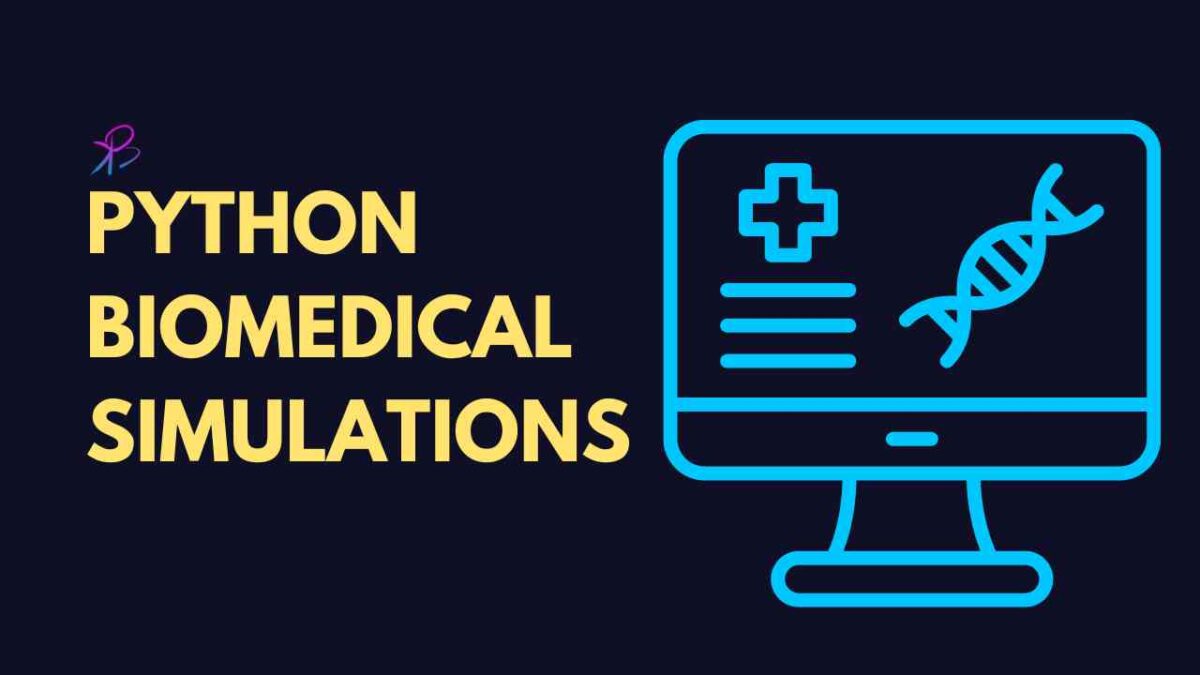The Convergence of Biology and Technology
In the fascinating world of biomedical research, simulations stand as a critical tool, offering glimpses into the complex mechanisms of life. Here, Python emerges not merely as a programming language but as a catalyst, propelling the field of biomedical simulations into new frontiers. The ease of learning Python, combined with its powerful capabilities, makes it a favorite among scientists and researchers. This synergy between biology and Python is revolutionizing how we understand and interact with biological systems, from the cellular level to complete organisms.
Python: A Versatile Ally in Biomedical Research
Python's role in biomedical simulations is multifaceted. It's not just about writing code; it's about creating models that can mimic the intricate workings of the human body. With Python, researchers can simulate biological processes, analyze vast amounts of genomic data, and even explore potential treatments for diseases. Its versatility is evident in its wide adoption across various research domains, from neurology to pharmacology.

Why Python is Ideal for Biomedical Simulations
The Beauty of Simplicity and Power
Python's simplicity is deceptive; beneath its straightforward syntax lies a robust engine perfect for complex biomedical simulations. This balance makes Python an ideal learning tool for budding scientists and a powerful instrument for seasoned researchers. It's a language that grows with you, adapting to the increasing complexity of your projects.
A Community of Innovators and Problem Solvers
The Python community is a vibrant tapestry of individuals, ranging from academic researchers to hobbyists, all contributing to its growth. This collective effort results in a rich repository of modules, libraries, and frameworks, continuously evolving to meet the diverse needs of the biomedical field. This community-driven development ensures that Python remains at the cutting edge of scientific research.
Key Python Libraries for Biomedical Simulations
The Building Blocks of Simulation
At the heart of Python's applicability in biomedical simulations are its libraries:
- NumPy and SciPy form the foundation, offering high-performance numerical computations – essential for modeling biological phenomena.
- Pandas shines in data manipulation and analysis, a frequent necessity in handling complex biomedical data sets.
- Matplotlib and Seaborn empower researchers with their comprehensive data visualization tools, turning raw data into understandable, insightful visual representations.
- BioPython is tailored for biological computations, playing a pivotal role in genomic and proteomic analyses.
- Specialized libraries like PyDy extend Python's capabilities to specific areas of biomedical research, such as dynamic biomechanical simulations.
Real-World Applications of Python in Biomedical Simulations
From Theory to Practice
Python's real-world applications in biomedical simulations are as varied as they are impressive. In drug discovery, for instance, Python-based simulations provide insights into molecular interactions, guiding the development of new therapeutics. In genomic studies, Python helps unravel the complex genetic factors underlying diseases, paving the way for personalized medicine.
Getting Started with Biomedical Simulations in Python
Embarking on a Learning Journey
For those new to Python in biomedical simulations, the journey is both exciting and accessible. Numerous online resources, from tutorials to specialized courses, offer gateways into this field. Key to this learning process is practical application – starting with small projects and gradually tackling more complex challenges.
Challenges and Future Trends in Biomedical Simulations with Python
Navigating Challenges and Embracing Future Trends
Despite Python's capabilities, challenges such as managing large-scale simulations and integrating diverse data types persist. However, the future looks bright, with Python poised to play a key role in areas like personalized medicine, advanced diagnostic tools, and even in the development of artificial intelligence applications in biomedicine.
Conclusion
Python: A Beacon of Innovation in Biomedical Research
Python, with its simplicity, versatility, and powerful library ecosystem, is not just a programming language; it's a gateway to innovation in biomedical research. As we look to the future, Python's role in this field is set to expand, driving forward the boundaries of what's possible in medicine and biology.
FAQs
Q: How accessible is Python for non-programmers in the biomedical field?
A: Python is renowned for its accessibility, making it an excellent choice for non-programmers. Its intuitive syntax and the abundance of learning resources make it relatively easy for anyone in the biomedical field to start using Python for simulations.
Q: Are Python-based biomedical simulations reliable for critical research?
A: Yes, Python's reliability, combined with its robust libraries, ensures that simulations are not only accurate but also adhere to the stringent standards required in critical biomedical research. With this expanded content, the blog post now offers a comprehensive and engaging exploration of Python's role in biomedical simulations, catering to both novices and experts in the field. 🧬👩🔬🐍🔍🚀
For help in modelling in any FEA, FDTD, DFT Simulation / Modelling work, you can contact us (bkcademy.in@gmail.com) or in any platform.
Interested to Learn Engineering modelling? Check our Courses?
check out our YouTube channel
u can follow us on social media
Share the resource
-.-.-.-.-.-.-.-.-.().-.-.-.-.-.-.-.-.-
© bkacademy
